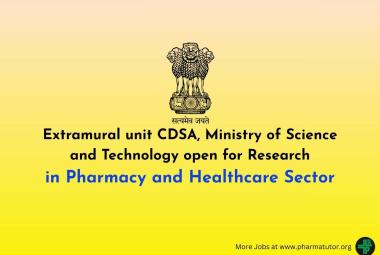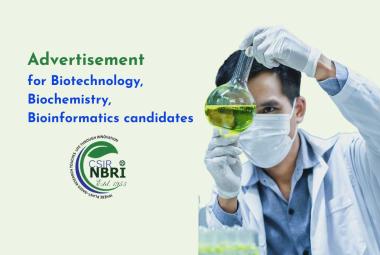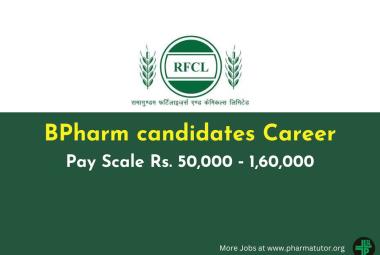 ABOUT AUTHOR:
ABOUT AUTHOR:
Vishwas B. Chawan
Consultant at Clinical Diagnostic Centre,
Mumbai, Maharashtra
vishwaschavan2003@yahoo.co.in
Cancer is called “Emperor of All Maladies.” Finding cure for cancer is one of the most important goal of medical research. Cancer is among the leading causes of morbidity and mortality worldwide. Globally, in the year 2012, cancer affected 14 million new people and 8.2 million people died from cancer or cancer-related complications[1]. Current cancer therapies are costly and have many side effects. Additional problems are development of resistance to treatment and recurrence of cancer even after initial successful treatment.
[adsense:336x280:8701650588]
Therefore, finding a cure for cancer is a great challenge for researchers and scientists world over. Though many new medicines and therapies were developed against cancer in recent years, the diagnosis of “cancer” is still synonym of death for many people.
Hence, as a scientist, I took this challenge and started to find a cure for cancer. At first, the task seems impossibly difficult. However, as it was said, “There is no lock without a key.” Or “There is no problem without a solution”, the answers began to emerge. The science literature is full of molecules, compounds, therapies, diets and plants that are claimed to cure cancer. Though it is true that majority of these claims failed to satisfy a rigorous scientific scrutiny, some approaches are worth considering as they are published in well-respected magazines and peer-reviewed journals. The purpose of this short review is to give cancer patients rays of hope, which are backed by scientific evidence.
The first and most important defense against cancer is the immune system of the body itself. Our immune system constantly keeps check on pre-cancerous cells developing in the body. Therefore development of cancer is considered as a sign of immune system failure. In AIDS, where immune system failed due to HIV, occurrence of cancer is greater. Hence, if the immune system is made powerful somehow, it can eradicate cancer from the body. This power of immune system is highlighted by the phenomenon of “Spontaneous regression of cancers.” [2], [3]. It was also known that if the burden of primary tumor is removed by surgery, body’s immune system mopped up the remaining metastatic tumors.
Even some healthy habits can help in curing cancer. These habits are Fasting, [4], [5] exercise [6] and meditation [7], [8].
[adsense:468x15:2204050025]
Another weapon in curing cancer is the diet we eat daily. Many dietary components (particularly fruits and vegetables) have the power of curing cancer, if used properly [9]. Chemicals like polyphenols, found in some foods help the body to utilize chemotherapy drugs. Polyphenols have cancer-fighting properties. According to the US National Library of Medicine, polyphenols are naturally occurring compounds found largely in fruits, vegetables, cereals and beverages. Grapes, apples, pears, cherries and berries contain high amount of polyphenols. Other foods and beverages that have polyphenols are cereals, dry legumes, chocolate, red wine, tea and coffee. Two polyphenols, resveratrol and quercetin, could become the basis of a new advance in cancer treatment that improves the efficacy and potential use of an existing chemotherapeutic cancer drug.
Many drinks we consume regularly has the power of curing cancer. Examples are tea [10],coffee [11], milk [12] , Orange juice [13], and Coconut water [14].
Another cancer defense lies in the plants around us (trees, herbs and shrubs). Many plants in our home and garden are capable of curing cancer. For example, Tulasi or Oscimum sanctum is found useful in cancer by following studies [15], [16], [17], [18].
Another example is neem or Azadirachta indica. This common plant is useful for cancer fighting as suggested by these studies [19], [20].
Thus, it is clear that cancer-fighting compounds are abundant in nature. By following healthy lifestyle, we can reduce the risk of getting cancer. If cancer still affects us by chance, there is no need to panic. Nature has given answers, many of with solid scientific background. The ultimate message of this short snippet is cancer cure is not impossible and nature has given us many weapons, which have been supported by strong scientific evidence.
REFERENCES
1. who.int/mediacentre/factsheets/fs297/en/.
2. Everson TC, Cole WH. Spontaneous regression of cancer. Philadelphia: WB Saunders Co. publisher; 1966.
3. Challis GB and Stam HJ. The Spontaneous Regression of Cancer: A review of cases from 1900 to 1987. Acta Oncologica 1990, Vol. 29, No. 5, Pages 545-550.
4. Changhan Lee et al. Fasting Cycles Retard Growth of Tumors and Sensitize a Range of Cancer Cell Types to Chemotherapy Sci Transl Med. 2012 Mar 7; 4(124): 124ra27.
5. Valter D. Longo et al. Fasting: Molecular Mechanisms and Clinical Applications Cell Metab. 2014 Feb 4; 19(2): 181–192.
6. Leitzmann M et al. European Code against Cancer 4th edition: Physical activity and cancer. Cancer Epidemiol. 2015 Jul 14. pii: S1877-7821(15)00076-4.
7. Yagli NV et al. The effects of yoga on the quality of life and depression in elderly breast cancer patients. Complement Ther Clin Pract. 2015 Feb; 21(1): 7-10.
8. Alejandro Chaoul et al. Mind-Body Practices in Cancer Care. Curr Oncol Rep. 2014 Dec; 16(12): 417.
9. Joanne L. Slavin et al. Health Benefits of Fruits and Vegetables. Adv Nutr. 2012 Jul; 3(4): 506–516.
10. G. Zhang et al. Anti-Cancer Activities of Tea Epigallocatechin-3-Gallate in Breast Cancer Patients under Radiotherapy. Curr Mol Med. 2012 Feb; 12(2): 163–176.)
11. Federico Pietrocola et al. Coffee induces autophagy in vivo. Cell Cycle. 2014 Jun 15; 13(12): 1987–1994.
12. Fabien J. Cousin et al. Milk Fermented by Propionibacterium freudenreichii Induces Apoptosis of HGT-1 Human Gastric Cancer Cells. PLoS One. 2012; 7(3): e31892.)
13. Enegide Chinedu et al. Evaluation of the anti-proliferative and cytostatic effect of Citrus sinensis (orange) fruit juice. Int J Appl Basic Med Res. 2014 Sep; 4(Suppl 1): S20–S22)
14. Prabhu S et al. Cn-AMP2 from green coconut water is an anionic anticancer peptide. J Pept Sci. 2014 Dec; 20(12): 909-915.)
15. Baliga MS et al. Ocimum sanctum L (Holy Basil or Tulsi) and its phytochemicals in the prevention and treatment of cancer. Nutr Cancer. 2013;65 Suppl 1:26-35.
16. Dhandayuthapani S et al. Apoptosis Induction by Ocimum sanctum Extract in LNCaP Prostate Cancer Cells. J Med Food. 2015 Jul;18(7):776-785.
17. Pandey H et al. Production of anti-cancer triterpene (betulinic acid) from callus cultures of differentOcimum species and its elicitation. Protoplasma. 2015 Mar;252(2):647-655
18. Bhattacharyya P et al. Ocimum sanctum Linn. (Tulsi): an ethnomedicinal plant for the prevention and treatment of cancer. Anticancer Drugs. 2013 Aug;24(7):659-666.
19. Rajkumar Paul, Murari Prasad & Nand K. Sah; Anticancer biology of Azadirachta indica L (neem): A mini review, Cancer Biology & Therapy, 2011; 12(6), 467- 476.
20. Hao F et al Neem components as potential agents for cancer prevention and treatment. Biochim Biophys Acta. 2014 Aug; 1846(1): 247- 257.
NOW YOU CAN ALSO PUBLISH YOUR ARTICLE ONLINE.
SUBMIT YOUR ARTICLE/PROJECT AT editor-in-chief@pharmatutor.org
Subscribe to Pharmatutor Alerts by Email
FIND OUT MORE ARTICLES AT OUR DATABASE









